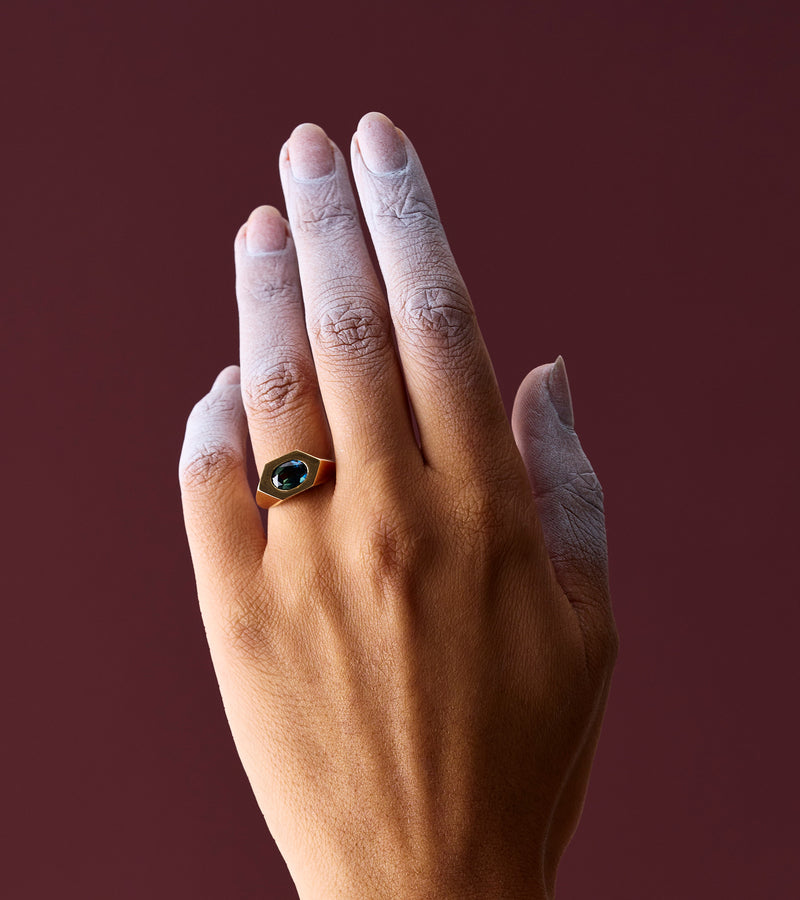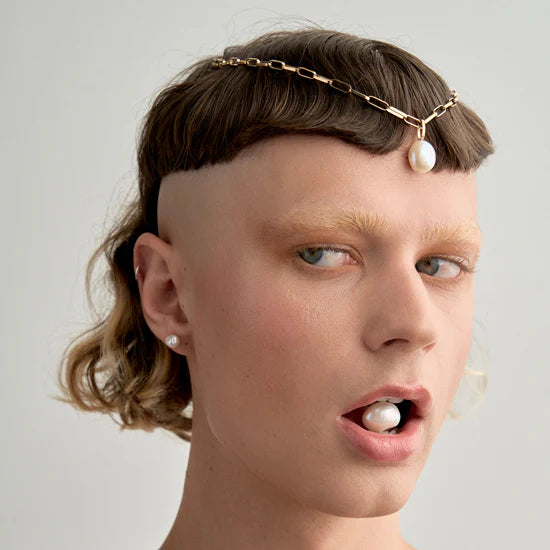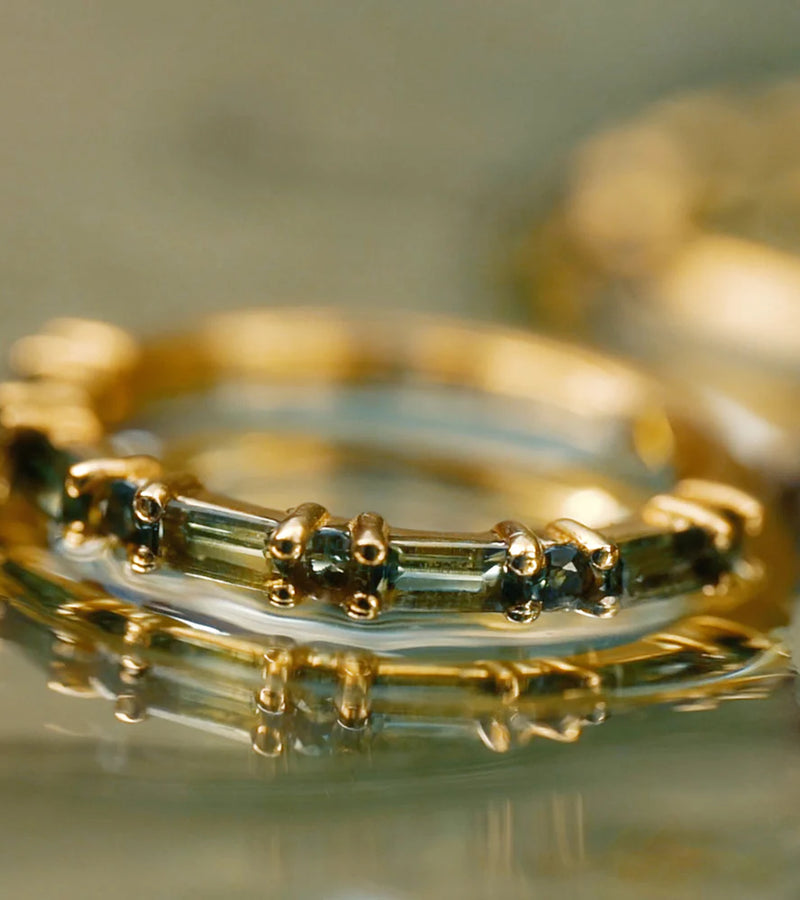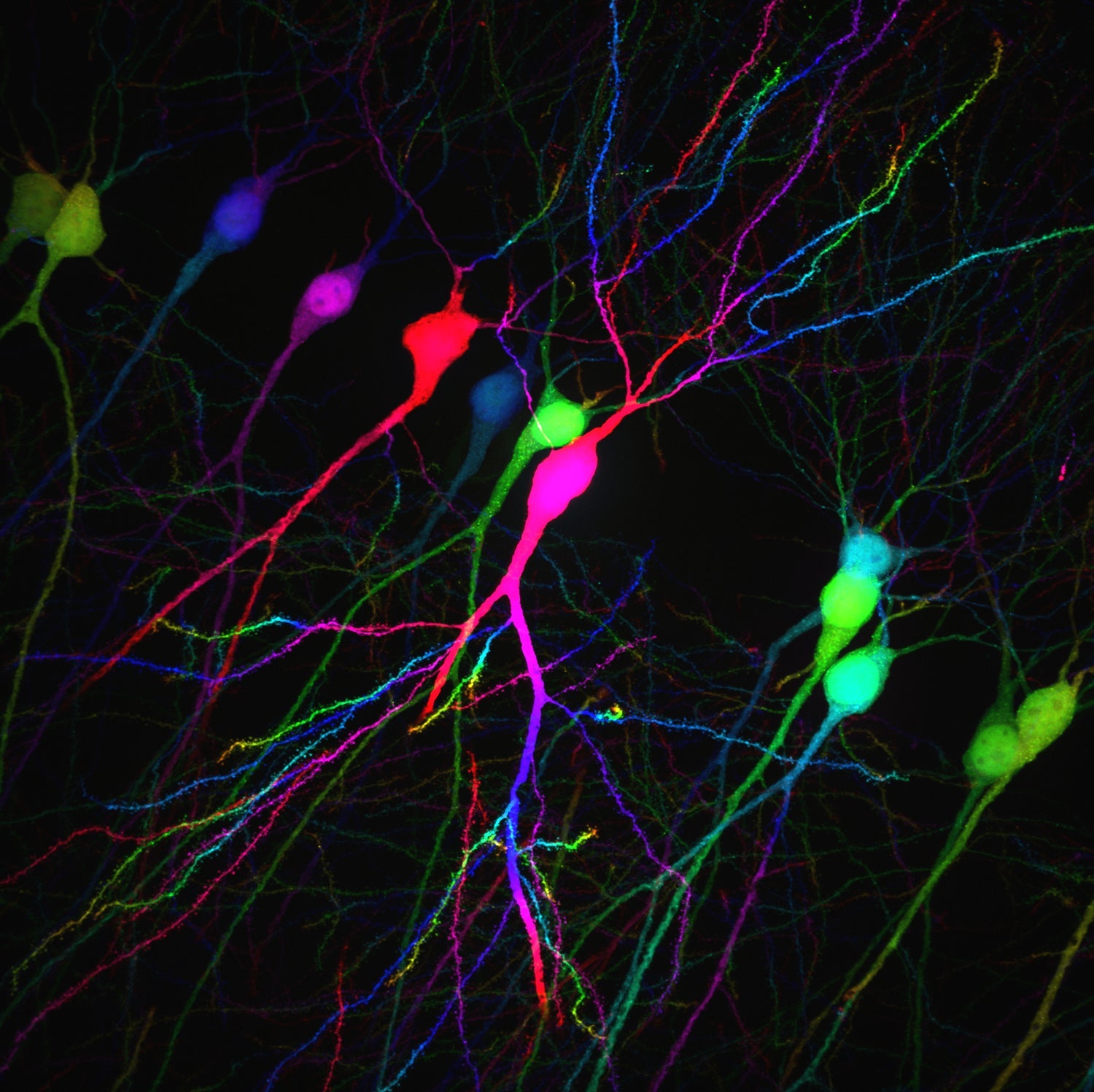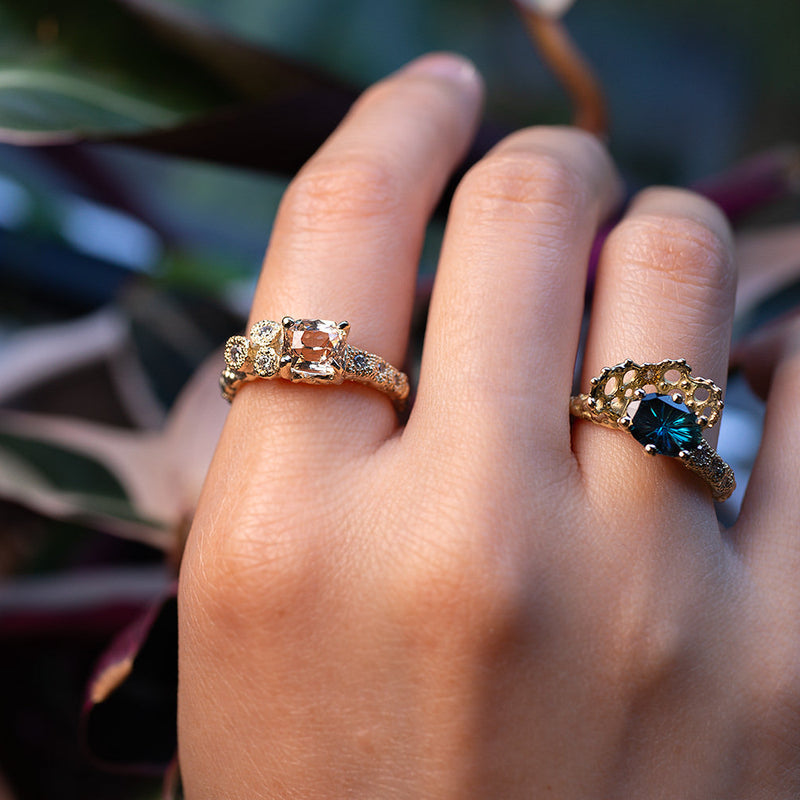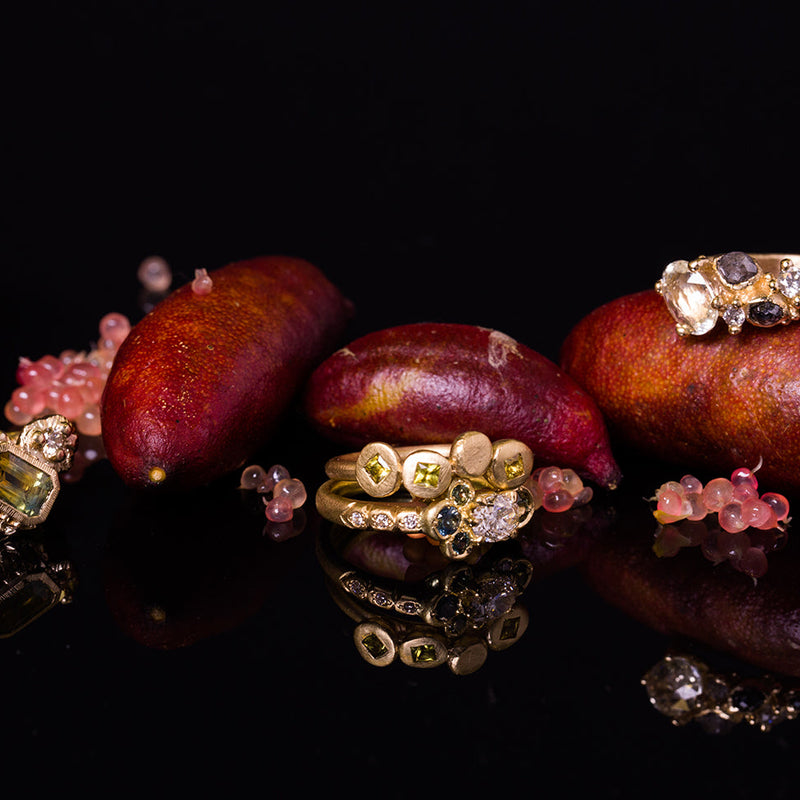
In a follow-up to our recent interview with Luke Maninov Hammond, Luke shared some more with us about how his work as a brain imaging specialist inspires the creation of his jewellery collection. Read on to see some incredible images captured by Luke of our brain cells at work, to understand the textures and patterns that emerge in his collection of organic rings, earrings and pendants.
How does your work as a neuroscientist inform your jewellery practice?
"The imaging I’m involved with in science provides a vocabulary of shape and form. However, the jewellery I create isn’t meant to be a direct translation of biology. Instead, I hope it reflects something deeper about what it means to be human: to spark curiosity in the complex beauty within us. Expressions that describe our journey, navigating through the world, while awareness and unseen currents shift within us. Patterns and textures that remind us of our extraordinary yet ephemeral existence."

High-resolution confocal image of fluorescently labelled neurons (brain cells), captured at the Zuckerman Institute, Columbia University.
Luke Hammond
Where do you draw inspiration from?
"A large part of my inspiration comes from nature and I’ve always been interested in exploring the mind. Early in my path to becoming a neuroscientist, I took up a research project using fluorescence microscopy to explore living cells. Fluorescence microscopy is a capability that allows us to see the otherwise invisible microscopic universe within living creatures.
It’s one thing to know that, without your awareness, every single cell in your body is almost vibrating with activity. It’s another thing entirely to see it with your own eyes. Looking down into an ocean of darkness and seeing these glowing worlds alive within cells was a profound experience that completely captured my imagination.
This work led me to an opportunity to establish an imaging platform at the University of Queensland in Australia, and ultimately to direct a new neuroscience imaging platform at Columbia University in New York City. Working with scientists to find ways to explore the brain and understand diseases using fluorescence microscopy has been a challenging but rewarding journey – and it’s also provided an opportunity to witness many beautiful and intricate forms and patterns hidden within nature."

A pain-sensing neuron and the surrounding cellular environment, from a study investigating peripheral neuropathy, a devastating condition often linked with chemotherapy and diabetes, with no existing cure or preventative treatment.
Image from Zuckerman Institute, Columbia University.
Luke Hammond and Grace Shin.
Visit Luke's artist page to explore his extensive and ever-evolving collection of unique, handmade designs.





